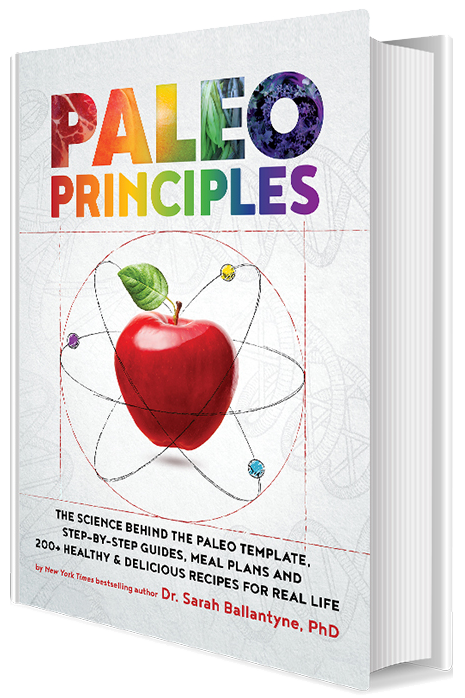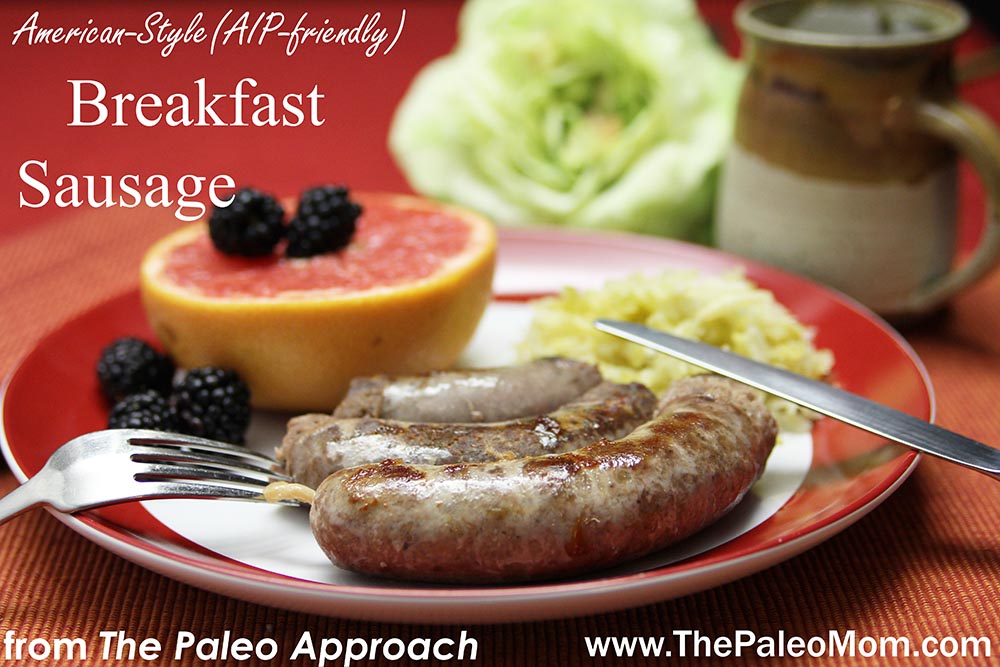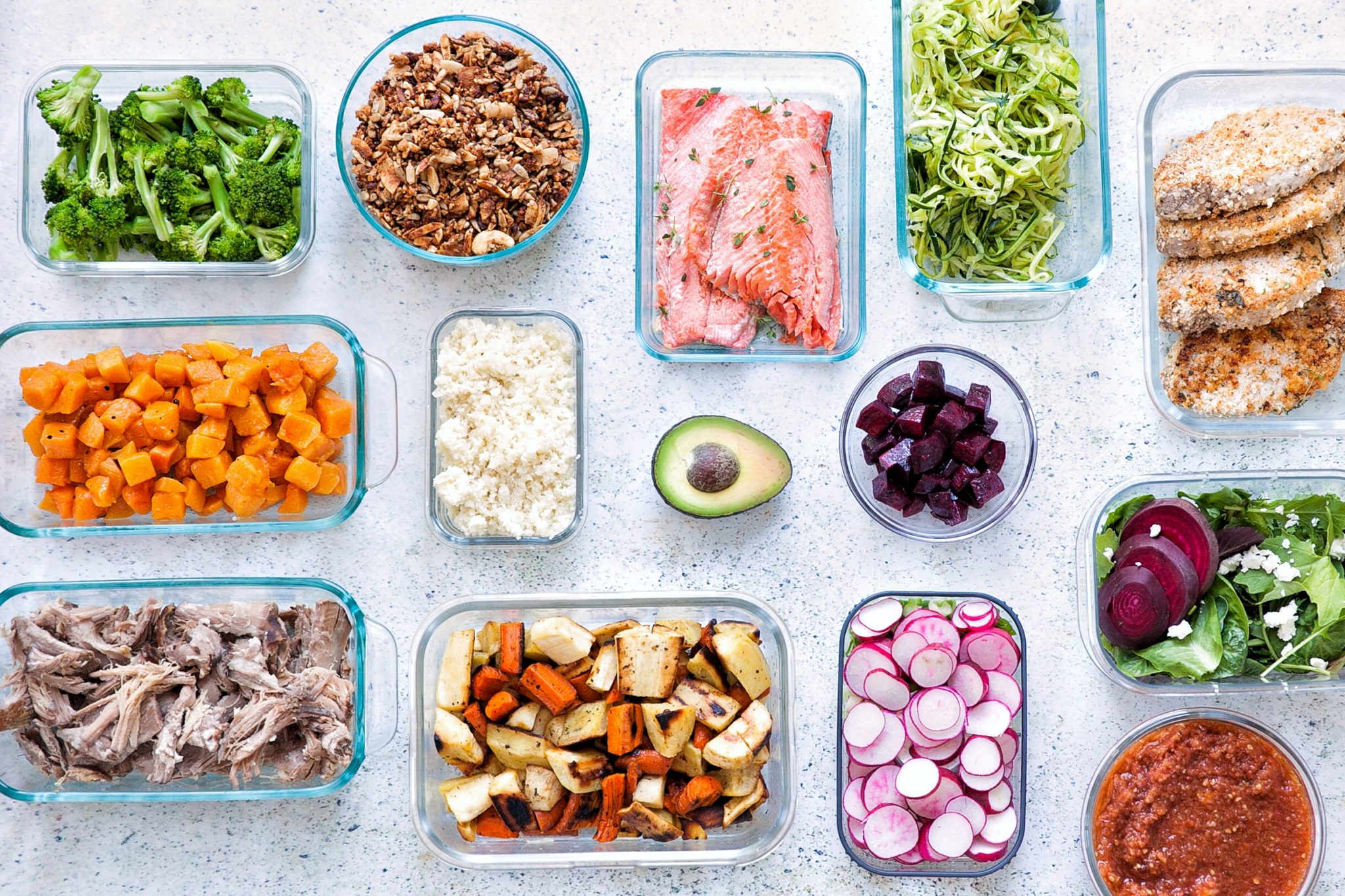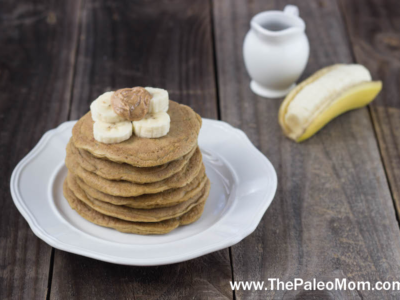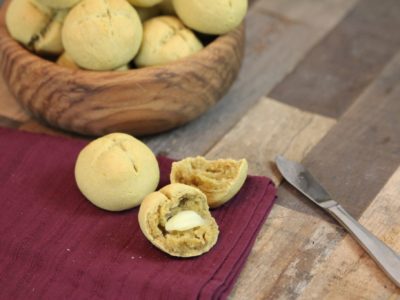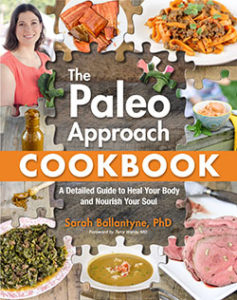 The Paleo Approach Cookbook will feature more than 180 delicious autoimmune-friendly recipes, from breakfast staples to decadent desserts. This Breakfast Sausage is one of nine sausage recipes it has to offer! The book will be released on August 26th and is available for pre-order here.
The Paleo Approach Cookbook will feature more than 180 delicious autoimmune-friendly recipes, from breakfast staples to decadent desserts. This Breakfast Sausage is one of nine sausage recipes it has to offer! The book will be released on August 26th and is available for pre-order here.
I also shared this recipe during my cooking demo at Paleo F(x) (you can read my summary of the conference here). I wanted to share this recipe because I really wanted to show people just how easy it is to have “real” breakfast foods (meaning stereotypical) that comply with the autoimmune protocol. The whole demo area smelled so good while my sausage patties were cooking that I just couldn’t help but share this recipe here on the blog for all of you to enjoy!
Homemade sausage is actually very easy to make. Sausage is just spiced ground meat after all. And, it can be hard to source premade sausage made with high quality meat and with only seasonings that comply with The Paleo Approach. Fortunately, you can make your own sausage that is so delicious you won’t be missing a thing (a little time investment makes a big batch that might last you 2-3 weeks).
Because sausage is such a great protein source, but can be challenging (yet not impossible) to source with exclusively Paleo Approach-friendly seasonings, a variety of sausage recipes are included in the cookbook. They are also an excellent opportunity to camouflage some organ meat and start your day with a terrifically nutrient-dense meal. And of course, these sausage recipes are actually delicious any time of the day!
Many different regions have traditional sausage recipes, many of which are represented in The Paleo Approach Cookbook. It’s amazing how a small tweak in spices can make a big difference to the finished product in terms of taste. Making 2 or 3 different types of sausage all at once will give you a month or even two of easy breakfasts with some choice for different flavors in the morning. All for a 1-4 hour time commitment. This recipe is for American-style Breakfast Sausage, which is what most of us in North America are familiar with when we when think of sausage.
Sausage usually works better with dried spices. This is because, by grinding dried spices before adding to the meat, it’s much easier to get uniform seasoning. However, some spices just don’t have any flavor after being dried. If you are using any fresh spices, make sure they are very, very finely chopped as this helps distribute the flavor more thoroughly. You may substitute fresh herbs wherever you see dried herbs if you with. As a general rule of thumb 1 tsp dried herbs is equivalent to 1 Tbsp fresh.
When making sausage, typically the fattier the meat used, the better the sausage tastes. Aim for 30-40% fat content (or 60-70% lean). Depending on where you source your meat, this might mean adding a little fat (or it might mean using it straight out of the package). If you are buying your meat from a butcher, you can ask them to grind some fat trimmings to add to the ground meat you just bought (typically done at no extra charge or for a nominal fee). If you are grinding your own meat, you can use the fattiest cuts to make sausage and even add extra fat (which you might have if you bought ½ pig or cow, for example). If getting a little extra fat into your ground meat to make sausage just isn’t practical, don’t worry about it–leaner sausage is still delicious.
Sausage really is best when stuffed into casings. Most home meat grinders come with sausage stuffer attachments and natural hog casings are fairly inexpensive. This is a worthwhile piece of equipment to invest in if you think you might enjoy sausage frequently. The sausage can then be parboiled and frozen for quick breakfasts all week long (or more!).
Don’t fret if stuffing into casings is too much work or too daunting of a task. There’s no rule that says that sausage has to be stuffed into casings. You can try it loose (add some veggies to make a scramble!) or form it into sausage patties. These can be precooked by baking in the oven or pan frying and then frozen for quick breakfasts all week long (or more!).
Optional: if you aren’t following the autoimmune protocol, go ahead and add 2 tsp of black pepper.
Yield: 10-20 servings
Breakfast Sausage
- 5 lbs ground pork
- 1 Tbsp salt (or even better, use truffle salt)
- 1 Tbsp sage
- ½ tsp ground ginger
- 1 ½ tsp mace
- 1 ½ tsp dried thyme
DIRECTIONS:
- Combine dried spices in a spice grinder and grind until it’s a fine powder. You can also do this in a mortar in pestle, clean coffee grinder, mini blender or mini food processor.
- Add fresh spices, dried spices, and any other ingredients to the ground meat.
Mix in the bowl of a standing mixer on low for 3-4 minutes or mix by hand to completely incorporate the spices into the meat - Cover with plastic wrap and refrigerate overnight and up to 24 hours.
For stuffing into casings:
- Follow the directions on the packaging for your natural hog casings (typically rinsing and then soaking in warm water for 30 minutes).
- Attach your sausage stuffer attachment to your meat grinder as per the manufacturer’s instructions. You can alternatively use a manual sausage stuffer (contraptions that look vaguely reminiscent of a water pump) or even a jerky gun or pastry bag without a tip attached.
- Grease the funnel end of your sausage stuffer attachment with lard, palm shortening or coconut oil. Feed the sausage casing onto the funnel until the entire casing is scrunched/folded up on the funnel, leaving only 3-4 inches over the end (to tie a knot in when you’re done—but leave it untied for now so you don’t get air bubbles in your sausage).
- Turn on your meat grinder as per your manufacturer’s instructions (typically on low speed for stuffing sausages). Feed your sausage mix through the feeding spout, pressing down with the tamping tool (which should have been included in your kit) or a wooden pestle. If you are using a manual sausage stuffer, fill the feeding tube with sausage mix and then press down on the handle to push the sausage mix into the casing.
- As the sausage mix fills the casing, it will gradually inflate and ease away from the funnel and coil in a rope like fashion. Make sure that the casing is filling completely but also make sure not to overstuff your sausage or else the casing may burst when you go to cook it. If you want kinks in your sausage to make sausage links, simple pause and twist a few times to create a kink.
- Fill the casing to within 3-4 inches from the other end. Tie a knot in both ends and set aside.
- Repeat until all of your sausage mix has been stuffed into casings.
- To parboil your sausage, attach an oil/candy thermometer to the side of a large stock pot. Fill the pot 1/2-3/4 full with water (you can add a tsp of salt to make it heat faster). Bring the water up to 165F (this should be just shy of a simmer). Fill the pot loosely with sausage (you may have to do this in batches depending on how big your pot is). Keep the temperature as close to 165F as you can.
- Poach the sausages until the internal temperature reaches 150F (15-20 minutes, depending on the size of the sausages).
- Remove from the pot and set aside. If freezing, refrigerate the sausage until cold and then slice into single servings before freezing. Freeze on a cookie sheet and then move to a re-sealable freezer bag or container.
- Fry over medium heat in a frying pan for 5-10 minutes (longer if trying from frozen) and enjoy! (You can also freeze after pan frying if you want to be able to just reheat your sausages from frozen in the microwave for a very quick breakfast.)
For forming patties:
- Preheat oven to 400F.
- Form 4oz to 8oz size patties with your hands and place on a rimmed cookie sheet, spacing about 1” apart (how big you make these patties will depend on how big a serving size you are aiming for) just as you would make hamburger patties. You may need 2 cookie sheets, depending on how thick you make your patties.
- Bake sausage patties for 15-25 minutes (depending on how thick they are) until internal temperature reaches a minimum of 160F. Alternatively, you can fry sausage patties in a frying pan or on a griddle over medium high heat.
- If freezing, freeze on a cookie sheet and then move to a re-sealable freezer bag or container. You can reheat from frozen in the microwave or by frying in a frying pan.


